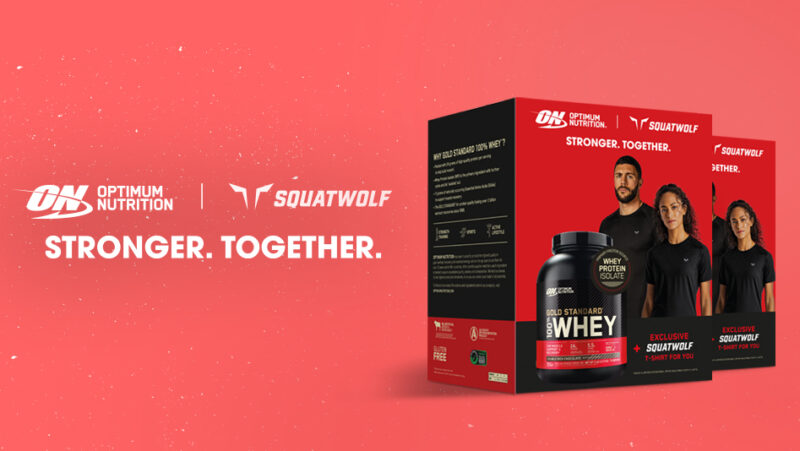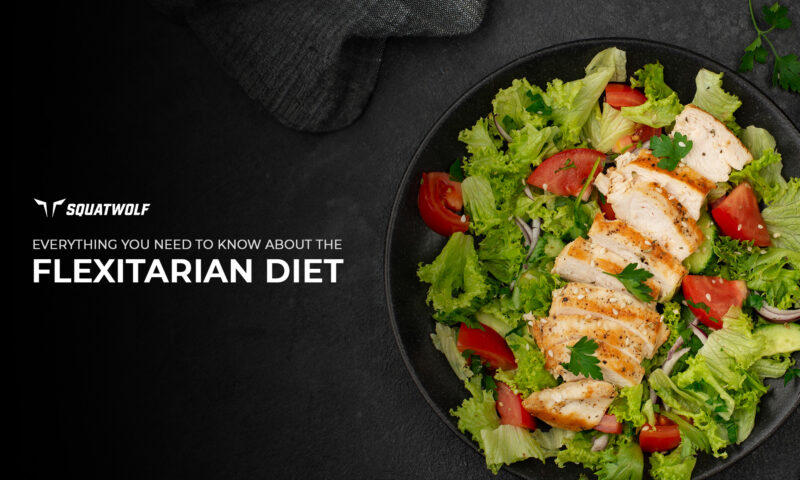The banting diet is a low-carb, high-fat diet, which limits the intake of carbs almost entirely.
It is considered to be a miraculous way to lose weight and first originated in 1862. It regained popularity in 2013 and is quit similar to the keto diet.
According to a study, low-carb diet is effective in overcoming obesity, aiding in weight loss, and reducing total body fat. There are various other benefits associated with this diet including reverting type 2 diabetes, controlling high blood pressure, as well as improving energy levels and quality of sleep.
While it may be a sustainable way of life for some, others may struggle with limiting their carb intake and following this diet strictly over the long run.
In this guide, you’ll get a complete rundown of how one can pursue this diet, a basic meal plan of foods to eat and avoid, and the pros and cons associated with this diet.
Eat well while trying to lose weight with these 5 lunch ideas!
What Is The Banting Diet | The 4 Stages | Foods To Eat And Avoid | Effectiveness In Weight Loss | Benefits | Disadvantages | Key Takeaways | FAQs
What Is The Banting Diet?
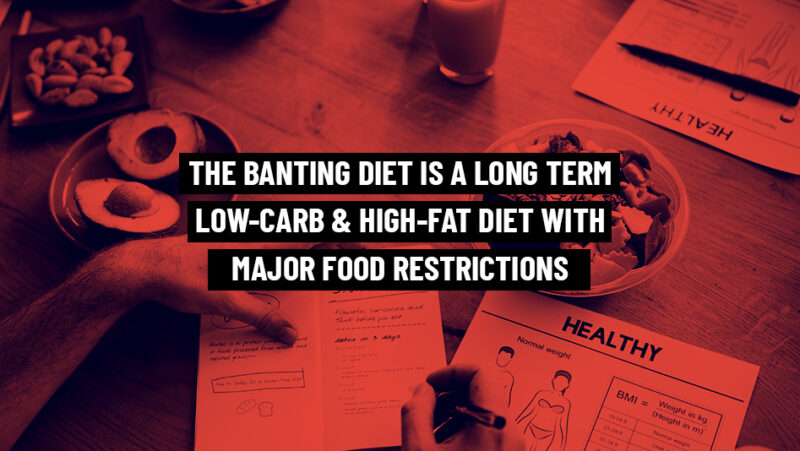
The Banting diet is named after William Banting, an English undertaker.
He had prescribed this diet in 1862, and he lost a considerable amount of weight by restricting carbs. Since this is also a form of no sugar diet, this diet restricts all kinds of sugary items.
Based on the success of his diet, Banting published a booklet titled “Letter on Corpulence”, whereby he revealed a detailed strategy and guide for weight loss through the low carb method. Hence, the word “banting” became the name of this method.
This popular diet re-emerged recently, as Tim Noakes, a South African scientist, and professor, tried the Banting diet himself and presented his take on it.
He wrote a book titled “Real Meal Revolution”, in which he laid down his own version of this diet, namely the Banting 2.0 or the RMR Banting approach.
The original Banting diet is divided into four daily meals and provides a detailed list of foods to eat and avoid, which makes it easier to follow.
According to the original version, one must consume:
- 5-10% carbs
- 15-20% protein
- 70-75% fats
- And completely eliminating sugars and gluten
However, the RMR Banting approach is a bit more complicated. It divides the process into four phases which are: observation, restoration, transformation, and preservation.
It provides structured meal plans along with multiple food lists that are detailed and fairly complex. Plus, this diet requires a more long-term approach and lifelong abstinence from foods containing sugar and gluten.
This blog focuses on the newer version of the diet, as presented by Noakes.
Got a sweet tooth craving? Try these low fat, low calorie desserts to satisfy your cravings!
The Banting Diet Method – 4 Phases
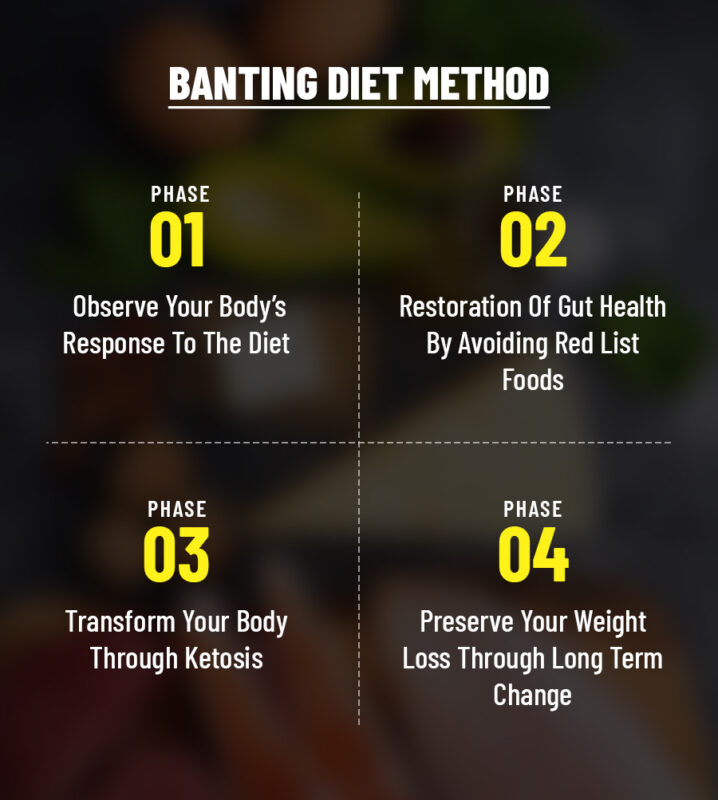
As mentioned previously, this diet is divided into four phases, aimed at easing into the transition towards a LCHF (low carb high fat) way of life.
These phases are described below:
Phase 1: Observation
In the initial phase, you should implement the diet as it is described, without incorporating any modifications.
Furthermore, you should record and journal your journey, and track how your body responds to the new diet.
Learn more about why keeping a food journal is important.
Phase 2: Restoration
This phase is aimed at restoring your gut health and ensuring that your body becomes accustomed to this new way of eating.
Typically, this phase lasts for 2-12 weeks, the duration is based on your weight loss goal.
You should aim to follow it for 1 week for every 5 kg of weight that you want to lose through the diet.
While there is no calorie counting or portion control in this phase, you will be introduced to a series of food lists that you have to abide by.
You have to avoid foods from the Red lists, and consume foods from the Green and Orange lists.
Try these 5 gut health hacks if you’re struggling!
Phase 3: Transformation
This phase is particularly important as it introduces you to ketosis, a process through which your body burns fat to produce energy.
This gets you in a rapid fat-burning mode, and it also includes hacks like intermittent fasting, exercise, sleep, and meditation, to ensure that you avoid reaching the weight loss plateau.
In this phase, you are supposed to consume foods from the Greens list, and avoid foods from the Orange and Red lists.
This phase has no specific duration, it can last as long as you reach your desired weight target.
Furthermore, additional benefits that may be experienced during this phase include improved mental clarity, sleep, acne, and skin irritation.
To stay on-track, you can get inspiration from these 4 keto meal prep options!
Phase 4: Preservation
This phase is supposed to last indefinitely and starts when you reach your desired weight. This phase helps in maintaining your weight for the future.
However, this phase is more flexible than the previous ones and allows you to reintroduce certain foods which were previously not allowed.
The food lists should be followed in the following manner:
- Green list: no limitation
- Orange: to be consumed in moderation
- Red: to be avoided at all times
- Gray: up to you
Make sure to pair your diet up with a 10 minute HIIT workout to burn calories for weight loss!
Foods To Eat And Avoid
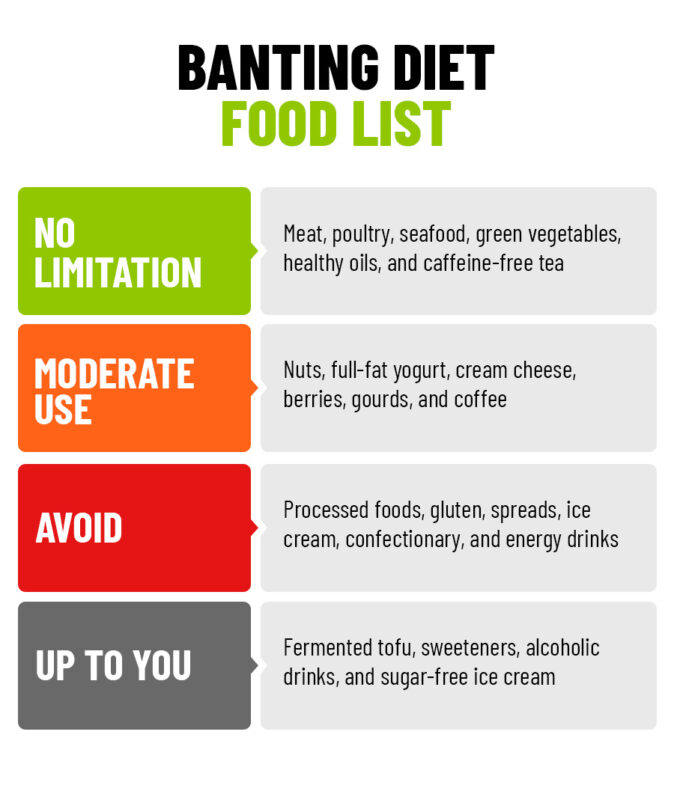
The Banting diet provides a series of lists of foods that are to be consumed or avoided during this diet. These lists are described as follows:
Green List
This list includes the foods which you can eat without any restriction.
- Meat, poultry, and fish: all meat, poultry, fish, seafood, offal, and naturally cured meats, for example, salami, pancetta, bacon, Parma ham, jerky, coppa (capocollo), and biltong.
- Eggs, and cheeses: Brie, Gorgonzola, Camembert, mozzarella, Roquefort, feta, Cheddar, Gouda, Emmental, ricotta, Parmesan, and pecorino, and homemade bone broth.
- Fruits and vegetables: leafy green vegetables, green beans, aubergine, artichoke hearts, asparagus, bean and Brussels sprouts, broccoli, cabbage, cauliflower, celery, chard, endive, courgettes, cucumber, fennel, gem squash, garlic, kale, leeks, radicchio, lemon and lime, lettuce, mushrooms, olives, onions, peppers, okra, palm hearts, radishes, rhubarb, rocket, shallots, spinach, snap peas, spring onions, tomatoes, and turnips
- Fermented foods: kimchi, coconut yogurt and kefir, kefir butter and cheese, milk kefir, sauerkraut, and naturally fermented pickles
- Condiments: all kinds of vinegar and fermented soy sauce or tamari
- Fats: any rendered animal fat, butter, ghee, cream, avocado, coconut oil, fruit and nut oils, seeds, and mayonnaise
- Drinks: caffeine-free herbal teas, flavored and plain water
Explore the 55 keto breakfast options to follow a low-carb, high-fat diet in the long run!
Orange List
These are foods that are meant to be eaten in moderation, as they may hinder your weight loss journey, despite the numerous benefits that they provide.
Nuts: raw nuts and sugar-free nut butter
Dairy: milk and milk substitutes, cottage and cream cheese, full-fat yogurt, and sour cream
Fruits: apples, apricots, bananas, blueberries, blackberries, cherries, clementines, fresh figs, gooseberries, granadilla, grapes, guava, jackfruit, kiwi, kumquats, litchis, loquats, mangoes, nectarines, orange, papaya, pears, peaches, persimmon, pineapple, plantain, plums, pomegranates, quinces, raspberries, starfruit, strawberries, tangerines, tamarind pulp, and watermelon
Fruits and vegetables: butternut squash, beetroot, carrots, baby corn, calabash, celeriac, cassava, corn, golden beets, edamame, Hubbard squash, parsnips, jicama, potatoes, peas, rutabagas, pumpkins, spaghetti squash, and sweet potatoes
Drinks: caffeinated tea and coffee
Fermented foods: kombucha and water kefir
Legumes and pulses: all legumes, beans, alfalfa, lentils, and chickpeas
Check out these healthy snack options for busy people!
Red List
This list includes those foods which you must avoid at all costs.
General foods: foods with added sugar, fast food, chips, and sugary condiments, such as dressings, ketchup, and marinades
Gluten: barley, bulgur, couscous, durum, einkorn, farina, graham flour, Khorasan wheat (kamut), matzo, orzo, rye, semolina, spelt, triticale, wheat, and wheat germ
Dairy-related foods: coffee creamers, commercial cheese spreads, condensed milk, ice cream, and commercial frozen yogurt
Sweets: all confectionery and non-dark chocolates, artificial sweeteners, agave, canned fruit, coconut sugar, cordials, fructose, glucose, jam, malt, rice malt syrup, sugar, and golden syrup
Drinks: energy drinks, soft drinks, commercial juices, commercial iced teas, flavored milks, and milkshakes
Grain-based products: all commercial breaded or battered foods, breakfast cereals, and all crackers
Processed meats: highly processed sausages and meats that are cured with sugar
Fats: butter spreads, canola oil, corn oil, cottonseed oil, margarine and shortening, rice bran oil, and sunflower and safflower oil
Learn more about the 6 reasons why intermittent is good for weight loss!
Grey List
These foods are also among those that may slow down your progress in this diet, hence they are to be eaten at your discretion.
Vegetarian proteins: naturally fermented tofu, pea protein, and processed soy
Sweeteners: xylitol, erythritol, isomalt, stevia powder, and sucralose
Drinks: all alcoholic beverages, protein smoothies, and supplements
Treats: Banting baked goods and sugar-free ice cream
If your goal is weight loss, you can also try the Ideal Protein Diet.
Does The Banting Diet Help Weight Loss
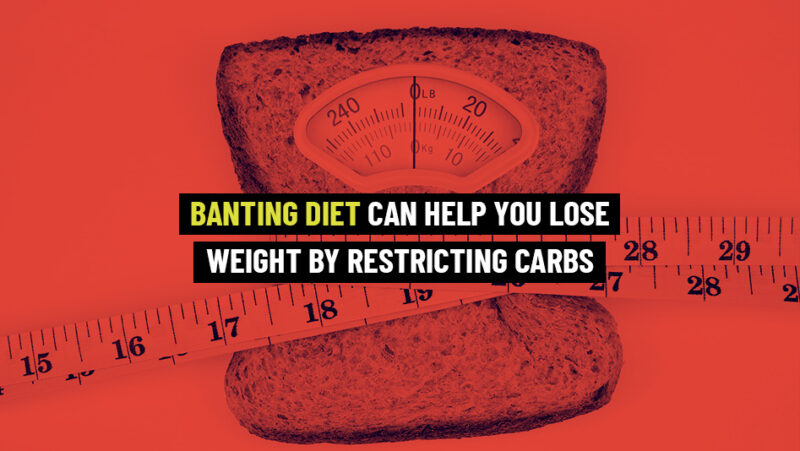
While there is less research on the correlation between the Banting diet and weight loss, studies have shown that LCHF diets are effective for losing weight.
A low carbohydrate intake results in a reduction of the circulating insulin level, which leads to a high level of circulating fatty acids, and leads to fat oxidation for energy needs.
This results in rapid weight loss, while also promoting the feeling of fullness, which occurs when you increase protein intake in your diet.
By eliminating foods mentioned on the Red list, you are bound to lose weight faster as consuming processed and sugary foods leads to weight gain.
Eat more whole foods such as baked oats!
Benefits Of The Banting Diet
Besides promoting rapid weight loss, the Banting diet can also lead to additional benefits including the following :
- Reversal of Type 2 Diabetes
- Treatment of Irritable Bowel Syndrome (IBS)
- Improved sleep
- Normalized blood pressure
- Improved energy levels
- Treatment of PCOS in women
- Improved mental clarity
- Reduction of heartburn
- Reduction of pain in joints
- Improved athletic performance
- Reduction in migraines
- Reduction in chronic inflammation
Trying to restrict your calorie intake? Try these salads under 500 calories!
Disadvantages Of The Banting Diet
While there are a plethora of benefits associated with this method of dieting, there are certain disadvantages that cannot be ignored.
- A highly restrictive diet which makes long-term maintenance difficult
- Lack of evidence regarding long term benefits
- Unsustainable in the long run
If you’re looking for a sustainable diet for maintenance or weight loss, try the flexitarian diet!
Free Low-Carb Diet Plan Menu
Don’t think you can get creative in the kitchen? You can always get inspired from our sample, free low-carb diet plan menu for the Banting Diet.
| Day | Breakfast | Lunch | Dinner |
|---|---|---|---|
| Monday | Scrambled eggs with spinach and feta | Grilled chicken salad with avocado and olive oil | Beef stir-fry with broccoli and mushrooms |
| Tuesday | Greek yogurt with nuts and seeds | Tuna salad with leafy greens and olives | Zucchini noodles with creamy salmon sauce |
| Wednesday | Omelet with mushrooms and green peppers | Bunless burger with a side of coleslaw | Grilled lamb chops with asparagus |
| Thursday | Smoothie with coconut milk, berries, and chia seeds | Cauliflower rice with grilled shrimp | Chicken curry with mixed vegetables |
| Friday | Avocado and egg breakfast bowl | Beef and vegetable soup | Pork chops with a side of sautéed kale |
| Saturday | Almond flour pancakes with butter | Cobb salad with hard-boiled eggs, avocado, and bacon | Grilled trout with a side salad |
| Sunday | Bacon and eggs with a side of tomatoes | Roast chicken with Brussels sprouts | Lamb meatballs with spaghetti squash |
Don’t forget to add some upper body and lower body workouts when on this diet to aid your weight loss journey. You can always try resistance band workouts as well as workouts with free weights. However, make sure you’re wearing the right gym gear so every move you make is engages all your muscles fully, leaving to effective weight loss!
Key Takeaways
The Banting diet is an LCHF diet that promotes weight loss by promoting gluten-free and eliminating sugary foods.
It promotes the consumption of nutritious, more wholesome foods and encourages people to adopt a healthier lifestyle.
However, the diet is highly restrictive and requires great discipline to implement it as a long-term lifestyle change.
Hence, it may not be completely sustainable in the long run.
Therefore, before embarking on the journey of adopting the Banting diet, you need to carefully consider the pros and cons associated with it.
Remember, weight loss can never be a short-term goal, it should be considered as a lifelong journey towards healthy eating and maintaining an optimal level of weight.
On the flip side, if your goal is fat loss, then you can try this high carb, low fat diet!
FAQs
For each individual, the weight you lose from a diet or workout depends on several factors such as your age, fitness level, body weight, body fat, intensity and etc. However, in the first week, the weight loss is significant because its usually the water weight leaving your body. Most commonly, people end up losing anywhere between 1-2 kgs or 2.2-4.4 lbs. But again, it greatly depends on your fitness level, the workouts you do, and several other factors.
While the Banting diet and keto are quite similar in their foundations as they’re both low-carb and high-fat diets, they actually have different approaches and follow different guidelines. The main different is that keto focuses on extremely low carb consumption to activate your body’s natural ketosis process. The goal is to utilize that stored fat in your body to promote fat loss. On the other hand, the Banting diet is a lot more flexible when compared to the keto diet. It focuses on including unprocessed, natural foods. It also does not specify how much fat you should be taking strictly the way keto does, making this diet a lot easier to follow.
No, you cannot eat rice when doing Banting diet as it is loaded with carbs. The goal of this diet is to promote weight loss through a low-carb, high fat diet along with the health benefits of whole, unprocessed foods. In addition, other than rice, you’re also not supposed to eat:
- Bread and other items made out of wheat
- Sugar along with artificial sweeteners
- Processed foods that are high in carbs, sodium and sugars
- Legumes such as beans, peas and lentils because of their high carb content
- High-sugar fruits such as bananas, mangoes, grapes, etc.
Although the Banting diet is great for weight loss and does offer some health benefits, it is important to remember that such diets are:
- Difficult to follow as they’re extremely restrictive and it’s just not practical to continue them in the long run
- Sometimes the underlying cause of nutritional deficiencies, especially if you’re not planning your meals carefully
- Not ideal for everyone, especially for people with some kind of health conditions
- Often tiring and exhausting to begin with, which may be a bit of a struggle for your body to adapt to





